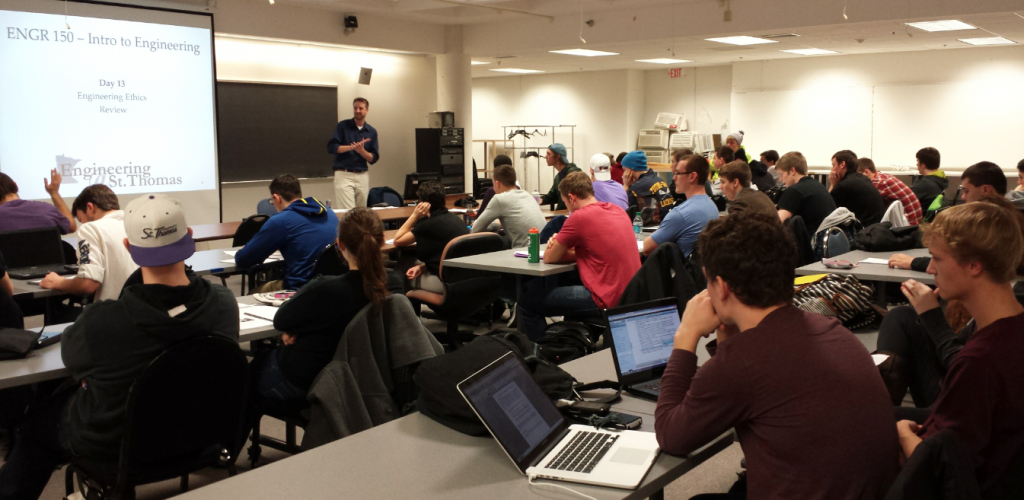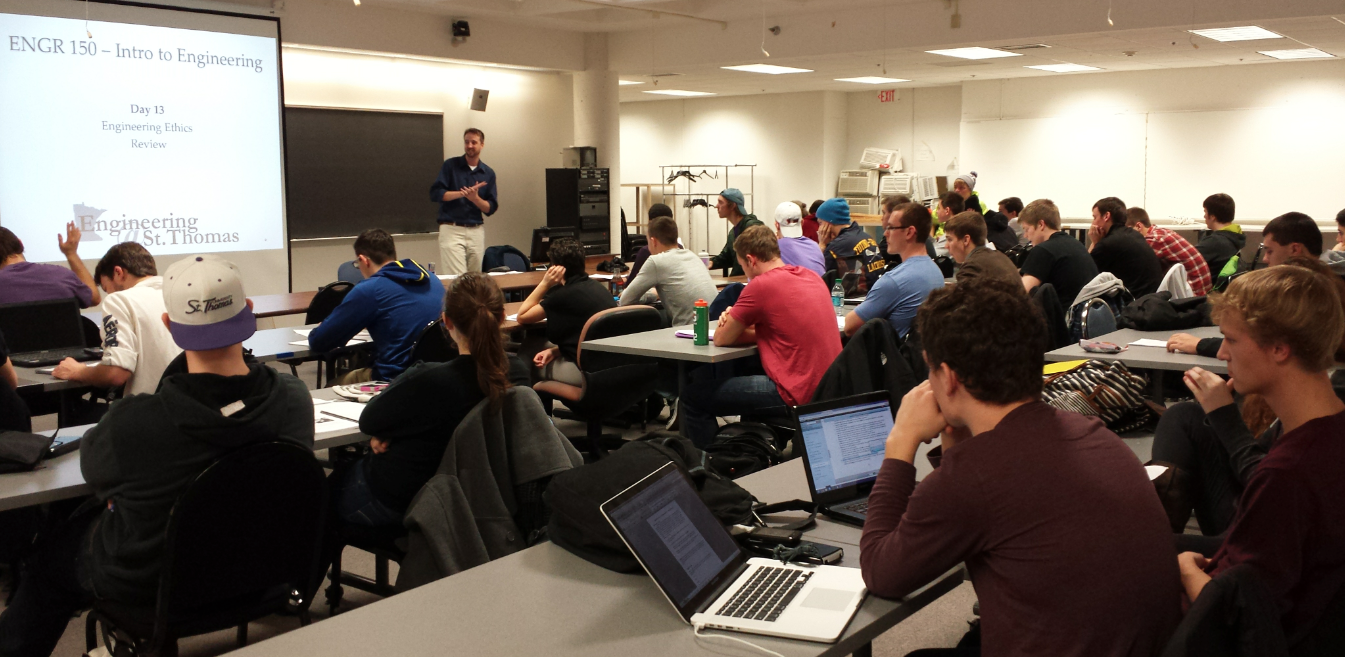
Students majoring in neuroscience, exercise science, mechanical engineering and electrical engineering are sharing their space with more students than ever before as the majors see rapid growth at the university.
These four majors are among the fastest-growing undergraduate programs at the university. In the past 10 years, the number of students who received a bachelor’s degree in electrical engineering has increased from nine during the 2003-2004 academic year to 23 in the 2012-2013 year according the St. Thomas’ 2012-2013 Outcomes Awarded Factbook.
The degree programs show a similar trend. During the 2003-2004 academic year 22 students received a bachelor’s degree in mechanical engineering, while no students received exercise science or neuroscience degrees.
However, during the 2012-2013 academic year, 59 students received mechanical engineering degrees, six received exercise science degrees and 36 received neuroscience degrees.
Bridget Duoos, an associate professor in the the health and human performances department, said the increase in exercise science majors is due to an expansion in related job opportunities.
“It’s a wide open field,” Duoos said. “Many (people) are exercising more than maybe what people did years ago, and so there’s a need for skilled professionals who know how to train people.”
Christopher Greene, the director of the electrical engineering program, said he expected more growth than he has seen, but that the increase has still had some effect on the program.
“There’s a larger student community every time (there is a new semester),” Greene said. “We have tried very hard to keep from growing class sizes and things like that, although we’ve had to do a little bit of that.”
Greene also said the growth is affecting professors in the electrical engineering department.
“We’re stretching our faculty very tightly with overloads and just having them teach an awful lot,” Greene said.
Greene said the electrical engineering program has worked hard to allow students to continue to have hands-on experience, but both Duoos and Green agree their programs need more lab space.
“We are challenged as far as having enough classroom space,” Duoos said. “We’re taking one of our classrooms to become a lab this January.”
The health and human performance department has hired four additional faculty members in the past three years.
Greene said the electrical engineering department is lab space that belongs to the physics department.
Sophomore Alyssa Hiedeman, an electrical engineering major, said she has also noticed a need for additional lab space.
“One thing that did show me that the program is growing is that there is a new building being built and an entire floor is being used by the engineering department,” Hiedeman said. “The program has outgrown the space it currently has.”
Senior Alex Getting, who is majoring in mechanical engineering, said he has had trouble regarding his program’s growth.
“The number of people makes it hard to get lab time if you need machine parts or something,” Getting said. “(The students) need more space.”
But Hiedeman said the growth isn’t all bad.
“I think that with the addition of more students and faculty to the engineering program, there comes the opportunity to learn more and to learn a greater amount of things,” she said. “The bigger that the program gets, the more students and professors there are to share their own personal experiences in the field of engineering and to improve the learning experience.”
Stephanie Eswine, a neuroscience major, has also noticed growth in her field of study.
“I know that the course offerings have become a lot more focused on neuroscience-specific courses,” Eswine said. “Some of my class sizes have gotten a little bit bigger which is good, because we can have more ideas and get differing opinions in our classes.”
Duoos, Greene and Eswine all said the hands-on opportunities at St. Thomas are what attracts students and faculty alike.
“When I was looking into different majors, I saw that (neuroscience) was kind of a research intensive major, and I really liked that about it,” Eswine said.
“I hope that the program keeps its hands on approach to teaching,” Hiedeman said. “In a field such as engineering, the best way to learn is to do everything you possibly can with your own two hands to make mistakes and learn from them.”
Compared to other private colleges in Minnesota, St. Thomas has a much more expansive course catalogue when it comes to neuroscience, electrical and mechanical engineering and exercise science. Carleton College does not offer any of the above majors after the university changed its neuroscience major to a concentration in 2008.
St. John’s University and the College of St. Benedict also do not offer majors in neuroscience, electrical and mechanical engineering and exercise science; however, the joint universities do offer a minor in exercise science.
St. Olaf does have a major in exercise science, with 23 students classed in 2013. The college also has a concentration in neuroscience.
Duoos said she hopes to see the growth continue.
“Hopefully we’ll be able to add additional faculty and lab space and equipment,” Duoos said. “We’ve got more and more students being involved with research and going out and presenting at national conventions and I hope that that will continue.”
Grace Pastoor can be reached at past6138@stthomas.edu.



